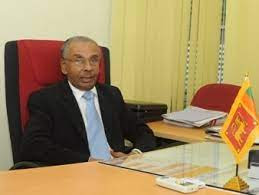DISPUTES OVER RIGHT OF WAY UNDER PART VII OF THE PRIMARY COURT PROCEDURE ACT NO 44 OF 1979
An Analysis of the Judgment in SC/Appeal 181/2010
date of judgement : 23.07.2024
Introduction.
The Supreme Court in the case of SC/Appeal
181/2010 delevered it’s judgment on 23.07.2024. The dispute in the case revolved
around a right of way over (lot 30). The core issue was whether the Respondent
(L.G.R.N. Perera) was entitled to use the roadway that was obstructed by the
Appellant (R. Malkanthi Silva).
Background
The origin of the dispute dates back to the
subdivision and sale of land by the Lanka Mahabodhi Society in the 1970s.The
1st Party (Perera) claimed the right to use lot 30 as a roadway to access his
land. This right was acknowledged and utilized over a period of time without
obstruction until the 2nd Party (Silva) purchased an adjacent lot (lot 28) in
2003 and obstructed the roadway by installing a gate and padlocking it.
Primary Court Proceedings
The Officer-in-Charge of the Thalangama Police
Station filed a report in the Primary Court of Kaduwela under Section 66 of the
Primary Court Procedure Act, concerning a dispute likely to cause a breach of
the peace. The Primary Court ruled in favour of the 1st Party, confirming his
right to use the roadway that resulted in a direction issued on the 2nd Party
to remove the obstructions.
Appeal and Legal Arguments
The Appellant (Silva) challenged this
decision in the Provincial High Court Court of Appeal and before the Supreme Court.
Key Legal Arguments:
1. Jurisdiction:
The
Appellant argued that the Primary Court lacked jurisdiction to issue a
declaratory order on rights to the land under Section 32(2) of the Judicature
Act, which excludes certain matters from the purview of the Primary Court.
2. Prescriptive Rights:
The
Appellant contended that the right to use the roadway could not be established
by long use, implying that this would amount to prescriptive rights, which the
Primary Court is not competent to determine.
3. Alternative Access: The Appellant argued that
the Respondent had alternative access routes to his land, and was not in need
of the road in question.
Respondent's Counter-Arguments:
1. Long-Established Use:
The
Respondent highlighted the long history of unimpeded use of the roadway by
himself and his predecessor, which established a prescriptive right of
servitude.
2. Servitude Rights:
Only
an owner of soil rights could prevent or obstruct another party from using a servitude
right of way. The Appellant, having only a servitude right, lacked the standing
to obstruct the Respondent.
3. Judicial Precedents:
The
Respondent also relied on previous court orders recognizing the use of lot 30
as a roadway.
Analysis of the judgment
In its judgment, the Supreme Court analyzed several crucial points of contention:
1. Preventive Jurisdiction: The Court
emphasized that the jurisdiction of the Primary Court under Section 66 of the
Primary Courts’ Procedure Act is preventive and provisional in nature and aimed
at maintaining peace and the status quo until a competent court can make a
final determination.
2. Entitlement vs. Ownership: The Court
clarified that the term 'entitlement' in Section 69(1) cannot be equated to
ownership. It merely establishes a party's right to use the land for the time
being to prevent a breach of the peace.
3. Use of the right of way during a
substantial length of time: The Supreme Court upheld the findings of the lower
courts that the 1st Party had sed the roadway for a long period of time without
obstruction, and this long-established use warranted maintaining the status
quo.
Key Judicial Precedents:
1. Ramalingam v. Thangarajah: This case highlighted
the distinction between issues of possession and entitlement under the Primary
Courts Procedure Act.
Sriyawathie Jayasinghe v. Karunaratne: Highlighted that a party claiming a right of
way must establish entitlement rather than mere usage.
Decision
The Supreme Court upheld the decisions of the
lower courts, affirming that the 1st Party was entitled to use lot 30 as a
roadway. The Court directed the Appellant to remove the obstructions and
refrain from preventing the Respondent from using the roadway. Additionally,
the Appellant was ordered to pay Rs. 900,000 in costs to the Respondent.
Some Crucial Points
1. Jurisdictional Clarity: The judgment provides
clarity on the jurisdiction of the Primary Courts in Sri Lanka, especially
concerning their preventive role in disputes likely to cause breaches of peace.
2. Temporary Orders: The ruling reinforces that
orders made by the Primary Courts under Sections 68 and 69 of the Primary Court
Procedure Act are provisional and
intended to maintain peace until a competent civil court makes a final
determination.
This judgment stresses the importance of maintaining peace and order through provisional measures while awaiting final adjudication from competent civil courts. It delineates the boundaries of jurisdiction and reinforces the principle that long-established use can justify temporary entitlements, ensuring that disputes do not escalate into breaches of peace. The decision also exemplifies judicial prudence in balancing immediate preventive measures with the ultimate resolution of property rights through the appropriate legal channels.



Comments
Post a Comment